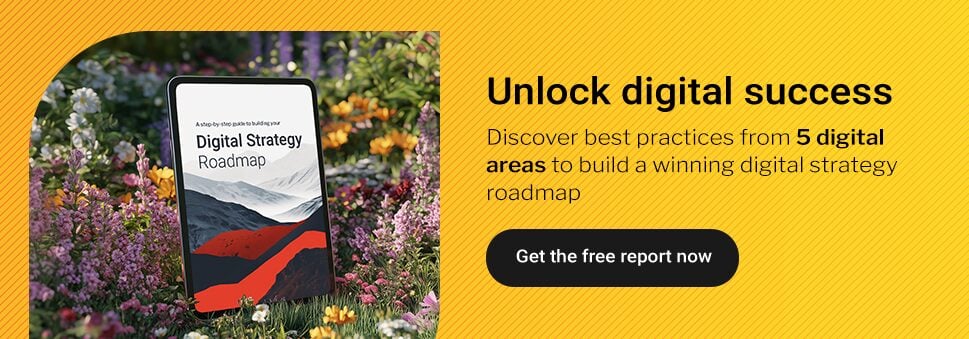The customer is rapidly evolving, especially around their digital behavior. Until recently, much of the customer interaction with a brand has been dated and fragmented. This could often leave the customer with a somewhat bitter aftertaste. Today customers are more empowered. They demand personalized interactions and seamless customer experience on all channels and through all stages of the customer journey.
This active and informed customer demands seamless omnichannel purchasing experiences at every turn. This seamless experience is many times the deciding factor in which brand and product to purchase.
So why is seamless customer experience so important? And how can you make sure you always deliver exceptional experiences? Keep reading for our three key areas to consider in the business of customer experience.
What is Customer Experience (CX)?
Simply put Customer Experience (CX) is the sum of all interactions a customer has with a company over time, through all touchpoints, digital or physical. From websites, apps, or social to products, employees (like customer service and sales), or physical stores. All these interactions add up to the emotional (primarily) and rational connections to a preferred brand and consequently the product and/or service.
Seamless customer experience strategy aims to provide consistent positive personalized experiences throughout the whole buyer journey. This way you can make sure that your customer has a great experience with no distractions or delays, driving conversion.
Not only does a seamless customer experience increase conversion, it also helps build relationships and create positive lasting impressions of your brand. So you don’t just help them buy effortlessly this time, you also keep them engaged for the future.
Why is Great Customer Experience Business-critical?
As we know, the overall experience with a brand is more often than not likely to be inconsistent or somewhat frustrating. To get noticed by and retain customers, companies need not only to understand their customers and their preferred experience but also proactively innovate and overdeliver on these experiences.
Customer expectations are higher than ever before and the bar is constantly being moved by companies that are redefining the standard for what an experience should be (think Spotify, Apple, or Amazon).
This effect is not industry or sector-specific nor contained in B2C / B2B, but universal. So success is becoming more and more dependent on the ability to at least meet or preferably exceed expectations with nearly every interaction. And it’s important to remember that this applies to both B2C and B2B. Remember that experience is an emotion-led perception, so it does not matter what combination of B’s and C’s we are talking about.
Consequently, as competition increases, customer experience may be one of the few ways left for companies to set themselves apart or create an advantage in the market. Companies with a focus on experience and an understanding of their customers will be leaders, with more engaged and loyal customers and will enjoy a steady increase in customer lifetime value (CLV). Those who don’t, well… (you get the point).
The Power of CX in Numbers
We can now see a direct correlation between delivering a great experience and commercial success. But don’t take my word for it, according to a recent study by Qualitrics, 89% of companies whose customer experience management is significantly above average, have increased revenue over the past year. This is significantly more than the 61% for companies with average and 38% with below-average customer experience.
Not only are great customer experiences financially beneficial, they are also a major focus for many companies. According to the same study, 77% of U.S. respondents believe that improving their customer experience management is either ‘critical’ or ‘very important’ in the coming years. And 53.8% of CEOs see Customer Experience as the primary competitive differentiator for their company.
With the vast majority of companies prioritizing the customer experience, you can’t afford to be left behind!
How to Deliver Seamless Customer Experiences?
Now what? Where to start? What areas of focus are crucial for creating these elusive exceptional experiences? There are three areas that stand out as key drivers and with some focus will get you on track for driving success in CX.
Customer Obsession is Vital (And Actually Healthy in This Case)
It has been apparent for a while now that being focused on understanding the customer is the key to getting anywhere with CX. But in my opinion that is no longer enough—being obsessed with the customer is now the standard. And in this case, it is actually healthy for you!
Pushing the customer as the first agenda in an organization is vital when it comes to driving any success in CX. There is no room for complacency here. As we said before, the target is moving all the time so customer understanding and action is paramount.
Now this will not happen in a silo, this must happen in a top-down and bottom-up approach, where the whole organization is pulling in the same direction. Boardroom lead obsession is essential in building and driving customer-first culture and empowering the organization to execute on that obsession.
Research indicates that there’s good cause to be this obsessed. According to a comprehensive report by PWC, customers willingly pay more for greater convenience and a positive customer experience. They are also more likely to try additional services or products from brands that provide a superior customer experience. And find a positive experience with a brand to be more influential than great advertising.
All in all, this hopefully gives a compelling case to obsess about the customer and the creation of exceptional interactions with them. And to make sure your seamless customer experience delights your customer at every touchpoint with your brand.
Related reading: Optimize your Digital Customer Experience in 5 Practical Steps
Integration of Technology and Teams is the Key
These exceptional experiences are led or supported by technology, or more accurately integrated technologies. There is a strong correlation between a seamless experience and a seamlessly integrated technology stack. This is especially true when we are talking about omnichannel experiences. But to be fair, we are talking “everyday experiences” for most of us here, jumping from mobile through digital to physical and back around again.
Making technology work for you when it comes to managing customer experiences, is not an easy feat. 51% of U.S. respondents saw technology limitations as a significant obstacle to better customer experience management efforts. However, it is possible, if you know what to focus on.
For a great seamless customer experience, it is crucial that you integrate cornerstone technologies like Martech and Adtech. Set up your technology stack with a customer experience at the center of everything you do. This way your technology stack can leverage each other to drive toward the goal.
But as with anything else, tech is never enough, without the people. From an organizational view, it is key to get Marketing, Sales, Commerce (ecom), and Support teams to drive toward the same goals and collaborate. Getting at least these four areas to play together will underpin a seamless customer experience—pre, during, and post.
Related reading: What is Digital Enablement?
Analytics are Crucial
Another reason why integrating your tech is so important is so that you can have a comprehensive view of your customer data. I think it is no surprise that to meet the customer demands, you need to understand your customer. Having a holistic view of your customer data gives you a competitive advantage in creating seamless customer experiences.
Today’s ecommerce landscape is moving away from simple user surveys and fragmented user data towards predictive analysis. This type of analysis helps build customer experiences that are predictive, value-focused, and highly personalized.
Another key technology for improving customer experience analytics is AI. For example, in a case study by McKinsey, they were able to increase satisfaction by 800% and reduce churn by 60% by using AI to identify and prioritize customers whose relationship with the brand was most at risk.
Talk about what truly personalized customer experience can do!
One Simple Conclusion—Seamless Customer Experience Matters!
The research shows it, tangible business effects prove it, and more importantly, the customer expects it—well actually ‘demands’ is a better word. A seamless experience is something that you need to get right, period.
Do you want to know how is your company rated on your customer experience? Need guidance in areas where you need to improve to deliver an inspirational and seamless experience to improve conversions?
Vaimo’s strategy team can help to score your business against more than 150 customer experience parameters and give advice and guidance on where and how to improve. Get a free tailored Customer Experience report here.
If you want to explore the topic more or have any questions don’t hesitate to reach out to Vaimo.









